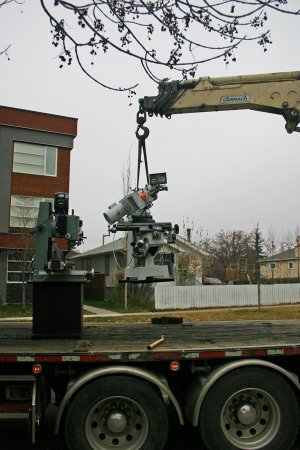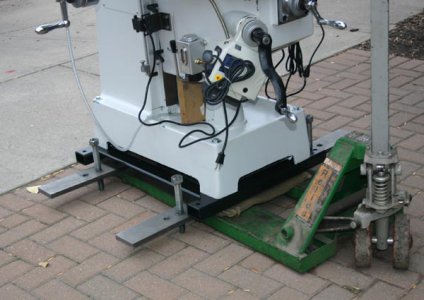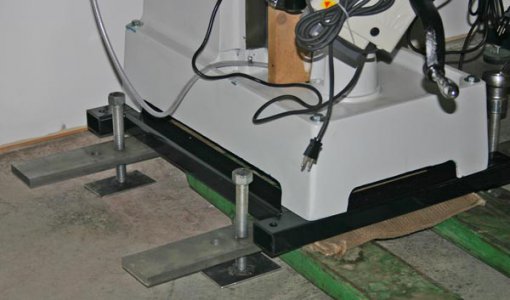My vote goes to pry bar and several pieces of scrap lumber along with some short, (long enough to span the bottom of the machine), lengths of 1”- 2” pipe for rolling. And/or a pallet jack. Rental yards and some big box stores rent pallet jacks for about $35 per day.
A few years back I bought 7 machines from a tool and die shop. 1 Bridgeport mill 1900#, 1 Cincinnati hv mill 2500+#, sinker edm est. 3000+#, 1 small K&T horizontal mill 3000+#, 3 surface grinders 500-3500#. All sitting flat on the floor. Had to move them out of a room before I could get a forklift to load them.
A friend who could barely walk helped me move them all with pry bar etc. as above. Not trying to brag just saying it can be done this way, very inexpensively.
Chuck
A few years back I bought 7 machines from a tool and die shop. 1 Bridgeport mill 1900#, 1 Cincinnati hv mill 2500+#, sinker edm est. 3000+#, 1 small K&T horizontal mill 3000+#, 3 surface grinders 500-3500#. All sitting flat on the floor. Had to move them out of a room before I could get a forklift to load them.
A friend who could barely walk helped me move them all with pry bar etc. as above. Not trying to brag just saying it can be done this way, very inexpensively.
Chuck






